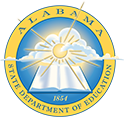To conclude this unit, students design a recommendation engine based on data that they collect and analyze from their classmates. After looking at an example of a recommendation app, students follow a project guide to complete this multi-day activity. In the first several steps, students choose what choice they want to help the user to make, what data they need to give the recommendation, create a survey, and collect information about their classmates' choices. They then interpret the data and use what they have learned to create the recommendation algorithm. Last, they use their algorithms to make recommendations to a few classmates. Students perform a peer review and make any necessary updates to their projects before preparing a presentation to the class.
Note: You will need to create a free account on code.org before you can view this resource.
